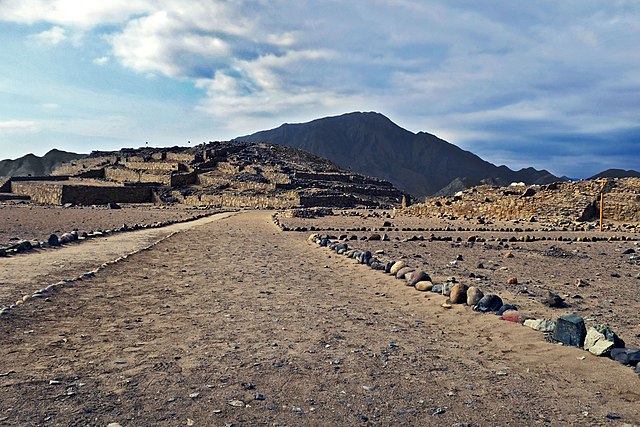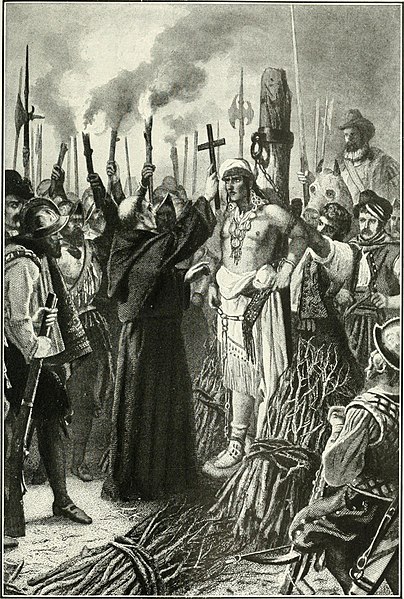The Cupisnique culture was a pre-Columbian indigenous culture that flourished from c. 1500 to 500 BC along what now is Peru's northern Pacific coast. The culture had a distinctive style of adobe clay architecture. Artifacts of the culture share artistic styles and religious symbols with the Chavin culture that arose in the same area at a later date.
Stirrup-handled Cupinisque ceramic vase 1250 BC (Larco Museum Collection)
Cupisnique ceramic bottle depicting a feline with rounded ears, a distinctive characteristic of the ocelot (Musée du quai Branly, Paris)
Ancient Moche people of Peru depicted spiders in their art, such as portrayed on this c. 300 AD ceramic artifact of the culture, with the spider deity shown holding a knife that often appears in depictions (Larco Museum)
Cupisnique ceramic bottle 1000–800 B.C., with caiman body and feline head. Met Museum, NYC
Peru, officially the Republic of Peru, is a country in western South America. It is bordered in the north by Ecuador and Colombia, in the east by Brazil, in the southeast by Bolivia, in the south by Chile, and in the south and west by the Pacific Ocean. Peru is a megadiverse country with habitats ranging from the arid plains of the Pacific coastal region in the west to the peaks of the Andes mountains extending from the north to the southeast of the country to the tropical Amazon basin rainforest in the east with the Amazon River. Peru has a population of over 32 million, and its capital and largest city is Lima. At 1,285,216 km2, Peru is the 19th largest country in the world, and the third largest in South America.
Remains of a Caral/Norte Chico pyramid in the arid Supe Valley
Moche earrings depicting warriors, made of turquoise and gold (1–800 CE)
The citadel of Machu Picchu, an iconic symbol of pre-Columbian Peru
One of the main events in the conquest of Peru was the death of Atahualpa, the last Sapa Inca, executed by the Spaniards on 29 August 1533








